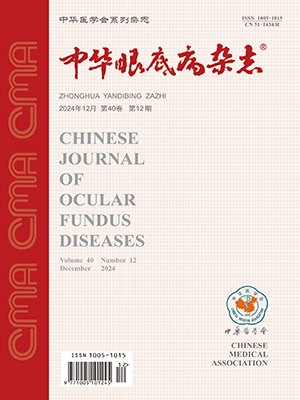Objective To determine the clinical efficacy of probucol in patients with diabetic macular edema (DME) and elevated serum lipids after focal/grid laser photocoagulation. Methods A prospective randomized controlled study included 48 type 2 diabetic patients with DME and dyslipidemia which were randomly divided into three groups. For patients with bilateral disease only the more severe eye was included. All patients were subjected to strict metabolic and blood pressure control during enrollment. All cases received macular laser photocoagulation. Besides, sixteen patients in group A were treated with probucol, 16 members in group B with atorvastatin and 16 members in group C were not treated with any lipid-lowering therapy for about three months. The outcome measurements were status of macular edema and hard exudates, visual acuity, foveal thickness, serum lipids and urine 8-hydroxydeoxyguanosine (8-OHdG) during the three months. Results The study included 20 men and 28 women with noninsulin dependent diabetes mellitus who could achieve good metabolic and blood pressure control within three months of inclusion in the study. Thirteen of 16 patients in group A, twelve of 16 patients in group B and five of 16 patients in group C showed reduction in hard exudates. Regression of macular edema was seen in twelve patients in group A, 11 in group B and eight in group C (χ2=2.368,P>0.05). The difference of foveal thickness in group A, B and C was statistically significant (t=4.929, 4.669; P=0.000). Nine patients in group A, eight in group B and six in group C showed improving of visual acuity (χ2=1.169,P>0.05). Three months after treatment, triglycerides (TG) (t=7.954, 6.832; P<0.05), total cholesterol (TC) (t=6.643, 5.368; P<0.05) and low-density lipoprotein cholesterol (LDLC) (t=3.279, 3.835; P<0.05) decreased in group A and group B but not in group C, and high-density lipoprotein cholesterol showed no significant difference in the three groups. 8-OHdG decreased gradually during the first and third month in group A and group B but not in group C. In the first month post treatment, 8-OHdG showed no difference between group A and group B. In the third month, the 8-OHdG was lower in group A than group B, and the difference was statistically significant (t=2.947,P<0.05). ConclusionsIn type 2 diabetes patients with DME and dyslipidemia, oral probucol can reduce the severity of hard exudates and macular edema, improve the visual acuity, and inhibit the levels of TG, TC, LDLC and 5-OHdG. The effect of probucol was similar to atorvastatin. Probucol could be an adjunct treatment of those patients.
Citation: Shibo Tang,YQ Duan. Clinical study of probucol in the treatment of hyperlipidemia diabetic macular edema. Chinese Journal of Ocular Fundus Diseases, 2013, 29(5): 490-494. doi: Copy
Copyright © the editorial department of Chinese Journal of Ocular Fundus Diseases of West China Medical Publisher. All rights reserved




